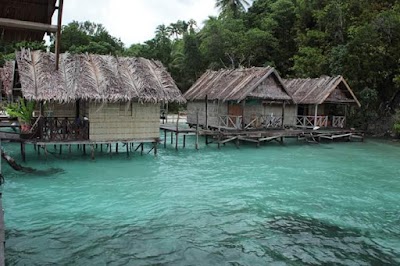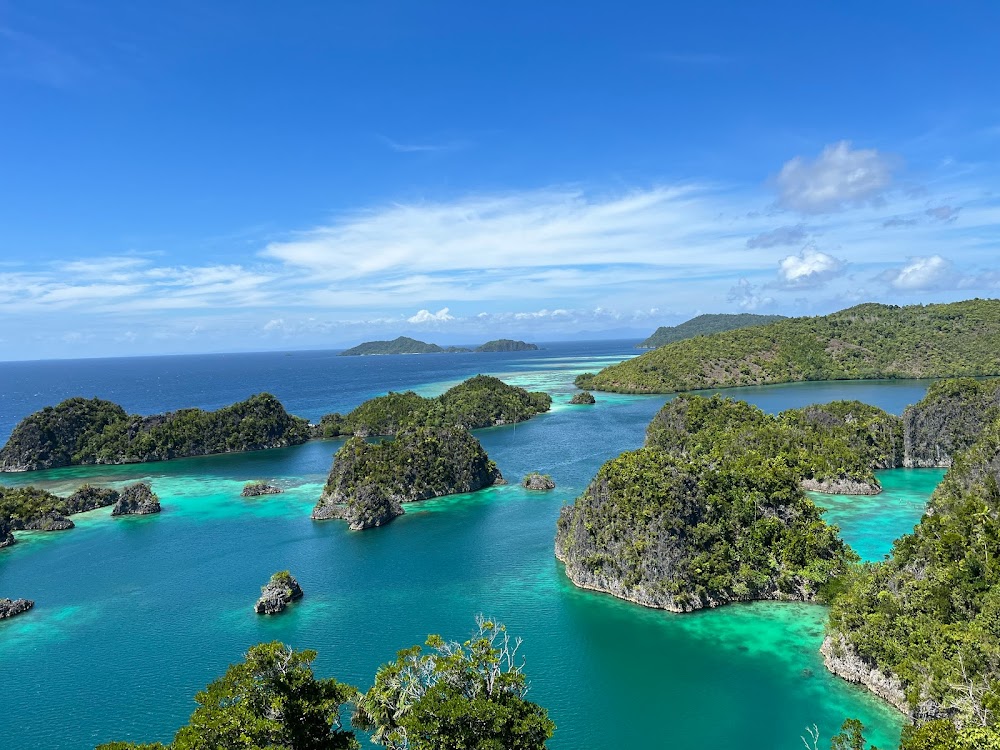Raja Ampat Islands (Kepulauan Raja Ampat)
Overview
Welcome to the breathtaking Raja Ampat Islands, a pristine paradise located in Papua Barat, Indonesia. The name "Raja Ampat" translates to "Four Kings," referring to the four main islands—Waigeo, Misool, Salawati, and Batanta—that form this stunning archipelago. Renowned for its unparalleled marine biodiversity, Raja Ampat is a dream destination for travelers from around the globe.
Historically, the Raja Ampat Islands were once part of the ancient kingdom known as the Tidore Sultanate, one of the powerful sultanates in the region. This kingdom ruled over a myriad of islands, fostering a rich culture and initiating traditions that resonate in local communities today. In the 16th century, European explorers arrived, predominantly searching for spices. Remarkably, these islands remained relatively undisturbed for centuries, preserving their natural beauty and ecosystems.
The significance of Raja Ampat lies in its breathtaking landscapes and ecological importance. Spanning over 1,500 small islands, cays, and shoals across an area of about 40,000 km², the region is a haven for divers and snorkelers. The crystal-clear turquoise waters reveal an underwater universe teeming with life. Raja Ampat boasts approximately 75% of the world’s coral species and an astounding array of marine creatures, including manta rays, sharks, and over 1,500 species of tropical fish, making it a top priority for marine conservation.
Beyond the underwater allure, the islands are adorned with lush jungles, hidden lagoons, soaring limestone cliffs, and traditional Papuan villages. Exploring the islands offers a sense of adventure and discovery, akin to stepping into an untouched world. Trekking through the rainforests, you might encounter the elusive birds-of-paradise or the mesmerizing Wilson's bird-of-paradise, along with other unique wildlife. These experiences are further enriched by the warmth and hospitality of local communities, who share their rich cultural heritage through dances, crafts, and folklore.
Raja Ampat is also a hotspot for scientific research due to its diverse ecosystems. Conservation efforts are critical here, with NGOs and researchers diligently working to protect these vibrant reefs from threats like overfishing and climate change. Sustainable tourism is encouraged, with many eco-resorts promoting initiatives that benefit both local communities and the environment.
There are countless intriguing facts about Raja Ampat that captivate travelers. For instance, the Misool Island is home to ancient rock paintings dating back thousands of years, offering a glimpse into the region's prehistoric past. Furthermore, the Dampier Strait, one of the most popular diving destinations within Raja Ampat, was named after the British navigator William Dampier, who sailed through these waters in the late 17th century.
The Wayag Islands, renowned for their picturesque karst island formations, provide some of the most iconic and visually stunning landscapes in Raja Ampat. Climbing the peaks of the Wayag Islands rewards visitors with panoramic views of emerald-green seas dotted with mushroom-shaped rock islands. Additionally, Raja Ampat is a haven for birdwatchers, with over 700 bird species calling the islands home, including the endemic red bird of paradise.
Getting to Raja Ampat typically involves flying into Domine Eduard Osok Airport in Sorong, West Papua, followed by a scenic boat transfer. Though somewhat remote, this journey adds to the allure of Raja Ampat, rewarding travelers with tranquility and seclusion upon arrival. Several resorts and liveaboards cater to various preferences and budgets, ensuring that everyone can experience the wonders of Raja Ampat in comfort.
To make the most of your visit, consider participating in locally organized tours and guided dives for safe and respectful interactions with the environment. Remember to embrace responsible tourism by adhering to eco-friendly guidelines, such as using reef-safe sunscreen, avoiding single-use plastics, and respecting local customs and traditions.
In summary, the Raja Ampat Islands present an idyllic retreat for nature enthusiasts, adventure seekers, and those yearning for a taste of tropical paradise. Its rich history, significant biodiversity, and intriguing cultural aspects combine to offer an unforgettable experience. Whether you’re diving into vibrant coral reefs, trekking through untouched jungles, or soaking in the serene views, Raja Ampat promises a unique and enriching journey that will stay with you long after you leave.
So pack your bags and prepare to discover a world where nature's magnificence unfolds in every direction—a true testament to the spellbinding allure of the Raja Ampat Islands.







